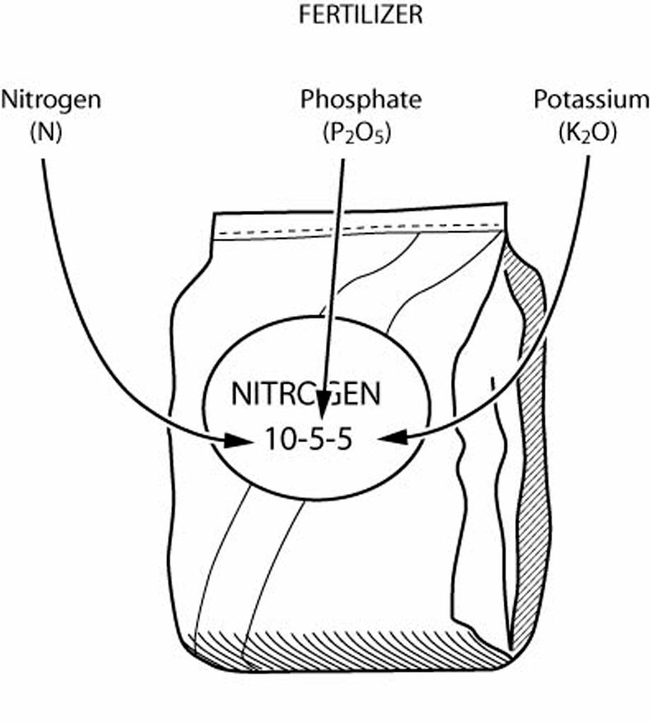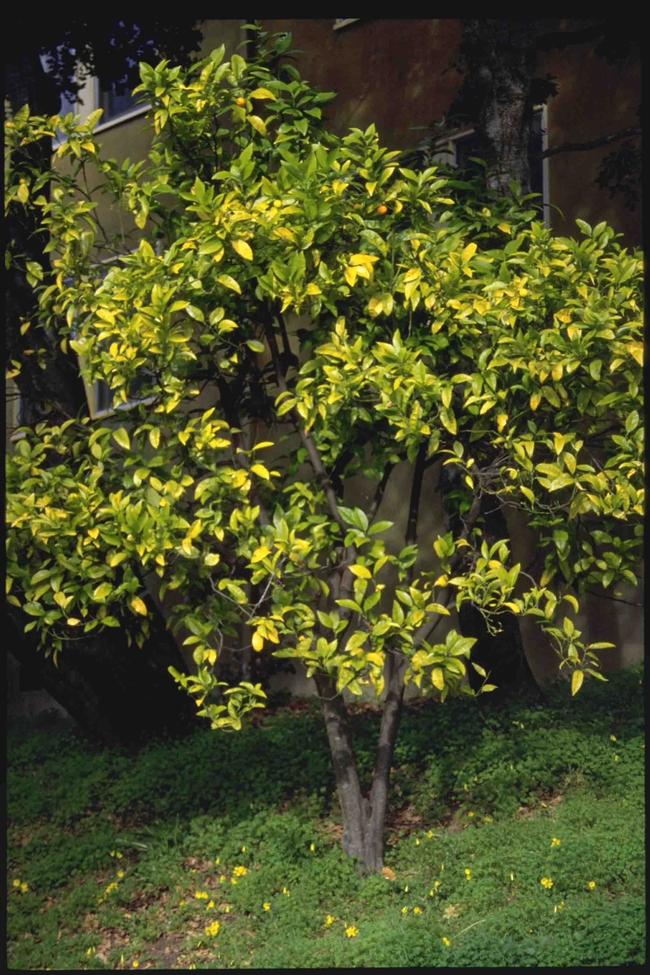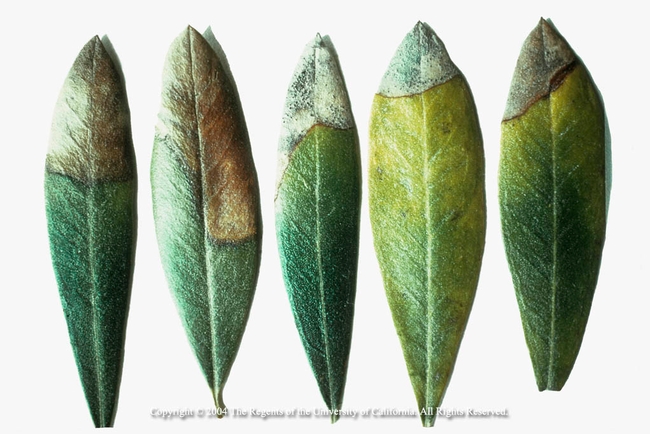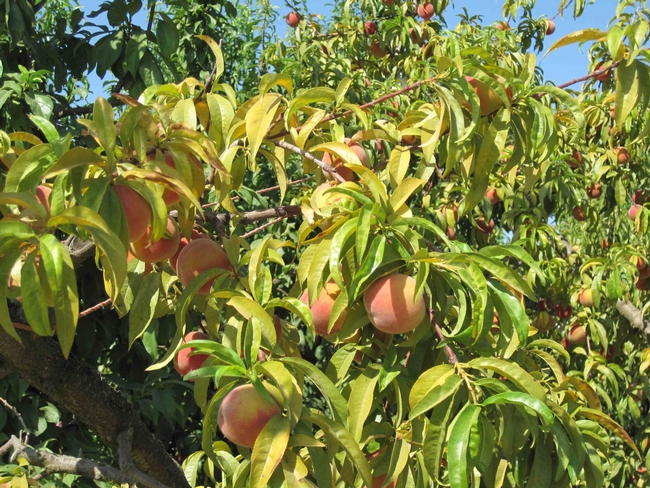What do those numbers on bags and boxes of fertilizer and soil amendments really mean? And what is the difference between a fertilizer and an amendment?
Fertilizer bag sample label, Dennis R. Pittenger, California Master Gardener Handbook. UC ANR
All commercial fertilizers are labeled with three bold numbers, indicating the percentage of primary plant nutrients that they contain. The first number is the percentage of nitrogen (N), the second number is the percentage of phosphorus (P - in the form of phosphate, P2O5) and the third number indicates the percentage of potassium (K - in the form of potash K2O). Nitrogen, phosphorus and potassium (N-P-K) are the primary nutrient elements needed in the greatest amounts by plants. Therefore, a bag of 15-10-6 fertilizer contains 15% nitrogen, 10% phosphate and 6% potash.
Nitrogen deficiency cases pale, yellowing leaves (chlorosis), UC ANR.
Phosphorus is a constituent of proteins, cell membranes, enzyme systems and DNA. It is essential for energy systems and photosynthesis, and stimulates root and seed formation. Abnormally dark green, purple, or bronze foliage is a symptom of a phosphorus deficiency, as is browning along leaf margins. A phosphorus deficiency may also result in poor fruit or seed development. Phosphorus deficiency is relatively uncommon, but grasses, carrots, lettuce, spinach and apples are plants that seem to be more highly susceptible. Here, too, chicken manure is a good organic amendment, as it is high in phosphorus, while bone meal (4-23-0) is the organic fertilizer containing the greatest amount of phosphorus.
Potassium deficiency in olive leaves, UC Regents
Severe potassium deficiency in peach, UC ANR
This information is based on Dennis R. Pittenger, California Master Gardener Handbook (Oakland, CA: University of California, Agriculture and Natural Resources Communication Services, 2002).
UC Master Gardeners of Butte County are part of the University of California Cooperative Extension (UCCE) system. To learn more about us and our upcoming events, and for help with gardening in our area, visit our website. If you have a gardening question or problem, email the Hotline at mgbutte@ucanr.edu (preferred) or call (530) 538-7201.



